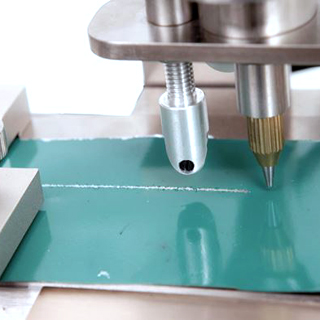- Qinsun Instruments Co., Ltd.
- Tell:+86-21-6780 0179
- Phone:+86-17740808215
- Address:No. 2578 Minhang District Gu Dai Road, Shanghai
- Contact:Mr. Li
- QQ:846490659
What is the purpose of measuring scratch resistance?

The purpose of measuring scratch resistance is to evaluate the ability of a material or surface to withstand scratches and abrasions under various conditions.
Scratch resistance is typically measured using a standardized test called the Mohs hardness test. This test involves scratching the material with different minerals of known hardness and determining the level of hardness at which the material gets scratched.
Are there any industry standards for scratch resistance?
Yes, there are industry standards for scratch resistance testing in various sectors. These standards provide guidelines and specifications for evaluating and comparing the scratch resistance properties of different materials. Here are a few examples of industry standards related to scratch resistance:
1. ASTM D3363 - Standard Test Method for Film Hardness by Pencil Test: This standard is widely used to assess the scratch resistance of organic coatings. It involves using pencils with different hardness grades to determine the pencil hardness required to scratch the surface of a material.
2. ISO 1518 - Paints and Varnishes - Determination of Scratch Resistance: This standard specifies a method for evaluating the scratch resistance of coatings. It involves using a stylus with a defined shape and a controlled load to scratch the coated surface and then assessing the appearance of the scratch.

3. ISO 19252 - Road Vehicles - Test Method for Determination of Scratch Resistance: This standard outlines a method for evaluating the scratch resistance of automotive exterior materials. It involves subjecting the material to controlled scratching using a reciprocating or rotating device and then visually assessing the resulting scratches.
4. ISO 15184 - Plastics - Film and Sheeting - Determination of Scratch Resistance: This standard provides a method for evaluating the scratch resistance of plastic films and sheets. It involves using a reciprocating or linearly moving stylus to apply specified forces and speeds to the material surface and assessing the resulting scratches.
These are just a few examples, and there may be other industry-specific standards for scratch resistance testing in sectors such as consumer electronics, furniture, or flooring. It is important to consult the appropriate standards and specifications relevant to your specific industry or application to ensure accurate and consistent evaluation of scratch resistance.





